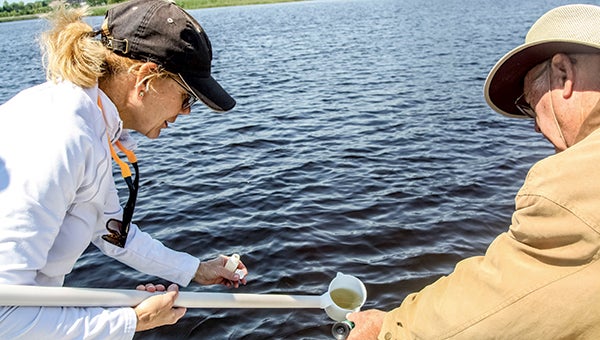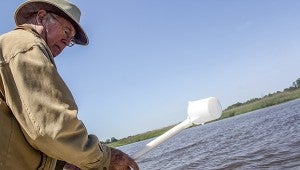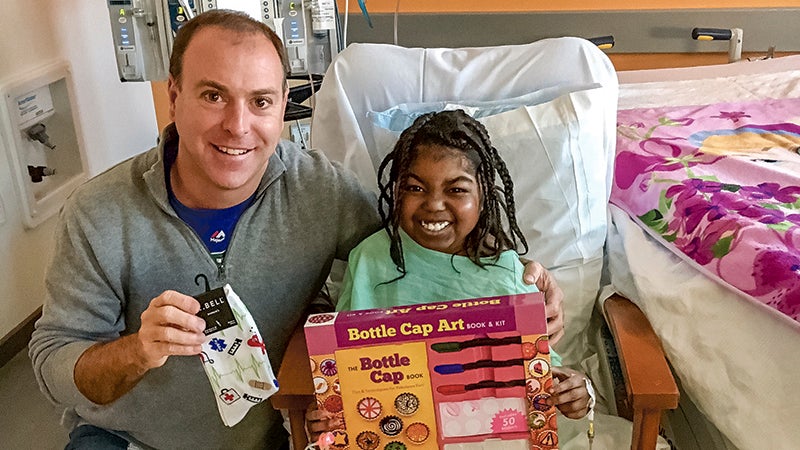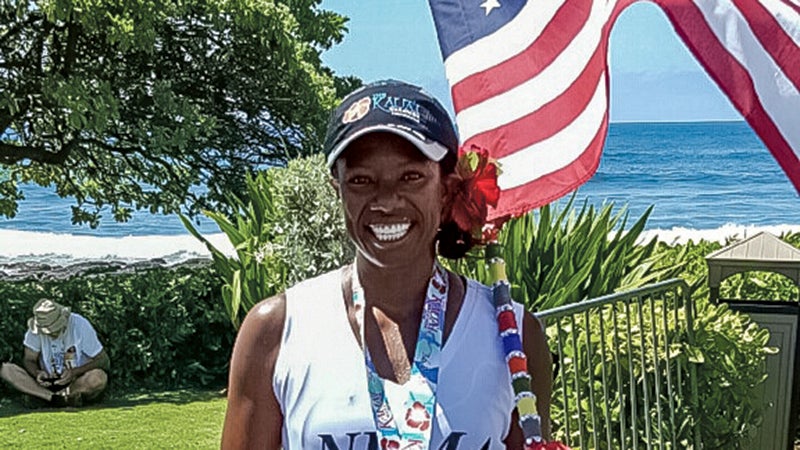Volunteers test water
Published 10:58 pm Thursday, May 26, 2016

Elizabeth Taraski and Brian Martin, of the Nansemond River Preservation Alliance, collect samples of river water for testing.
As the powerboat idles in the water, the Nansemond River Preservation Alliance volunteers start hustling.
Volunteer Brian Martin and Elizabeth Taraski, the organization’s executive director, fill a small plastic container with water from the Nansemond River and use a refractometer — a digital device that measure salinity — to test a water sample. The bottled sample will be used to check the water’s bacteria levels.
Volunteer Webster Fox slowly lowers a disk into the water to check for clarity. Meanwhile, Dickenson College intern Arden Staples checks the water’s temperature and oxygen levels.
After Taraski records the information, it’s on to the next stop along the Nansemond River.

Nansemond River Preservation Alliance volunteer Brian Martin scoops a cup of water from the Nansemond River to check salinity levels.
Each month, the group runs the tests at nine sites along the river, beginning at the mouth in North Suffolk and ending at the Hilton Garden Inn in downtown Suffolk.
Two other groups of NRPA volunteers conduct similar monthly tests on Bennett’s Creek and Shingle Creek on the same day, Martin said.
Once all the tests are done, Taraski uploads the results into Virginia Department of Environmental Quality’s database.
The DEQ relies heavily on citizen monitoring around the state to help maintain and improve the health of the state’s waterways, according to the DEQ’s website.
The DEQ looks at the data to identify any hotspots that need to be monitored more closely, Taraski said. The DEQ, the Virginia Department of Health and the city’s Public Works department also routinely test water samples from the Nansemond.
The Nansemond River’s health has been declining for years, evident by the state health department’s condemnation of more than 1,000 acres of the river for shellfish harvesting because of high bacteria levels. All of Bennett’s Creek and Knott’s Creek are also closed. The VDH looks at 30 months of test data to make its decisions.
The alliance analyzes the information it collects to produce a report on the status of Nansemond River every two years, Taraski said.
“It’s an educational tool,” Taraski said. “I also think it encourages and inspires people to implement best practices when it comes to protecting our river.”
Beginning this month, the alliance, VDH biologists and Suffolk’s Public Works department began meeting to share information and more aggressively address the increasing pollutants in the Nansemond River, Taraski said.
“We all want to do everything we can to restore the waterway to full health,” Taraski said. “We are talking about ways we can all work together to identify the undefined source of bacteria.”





